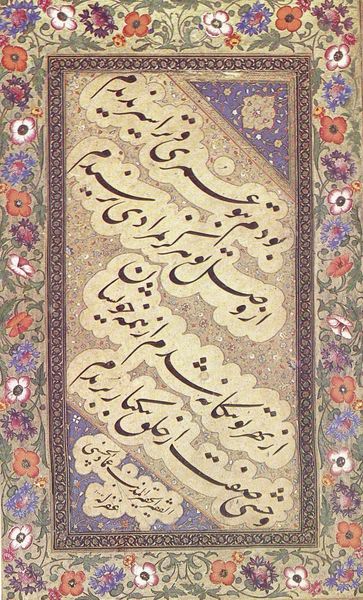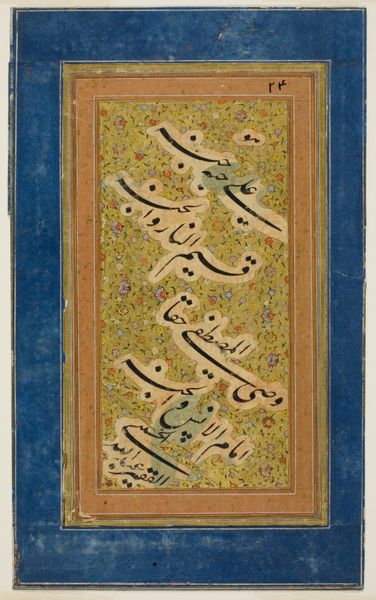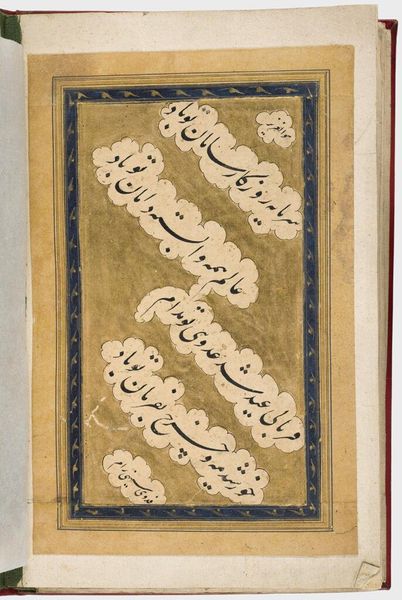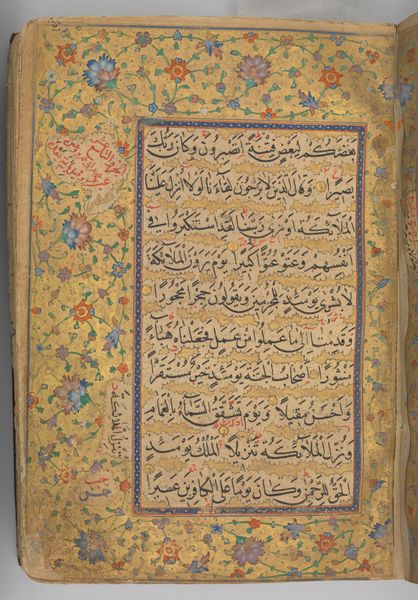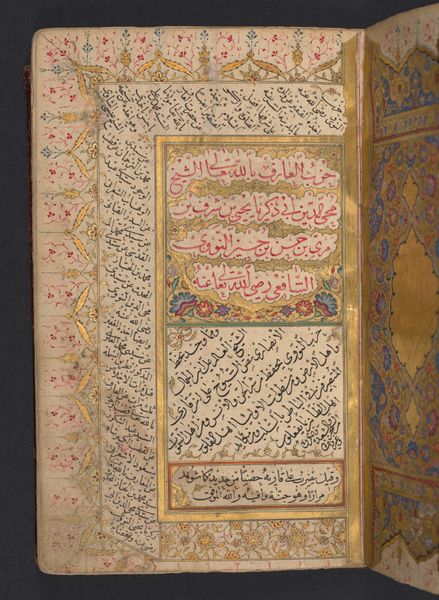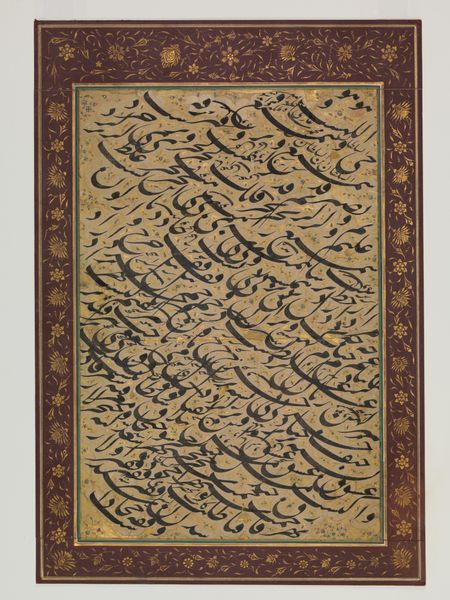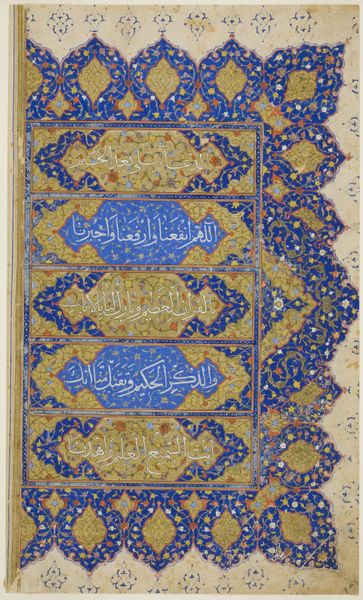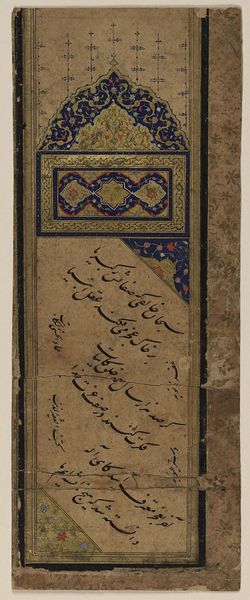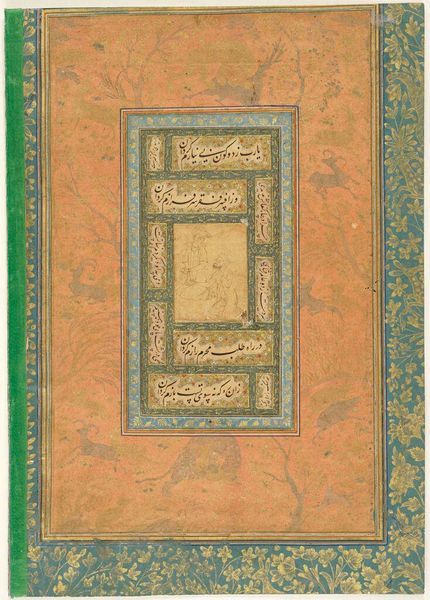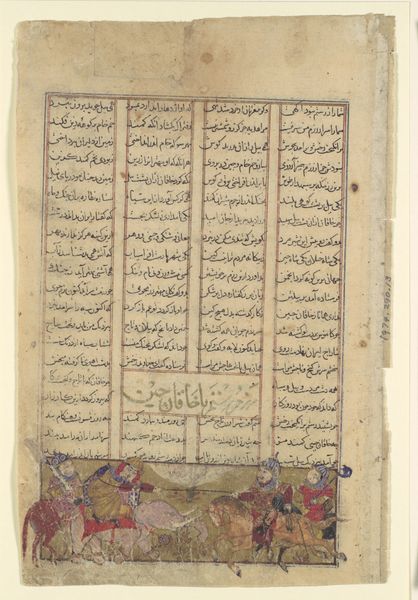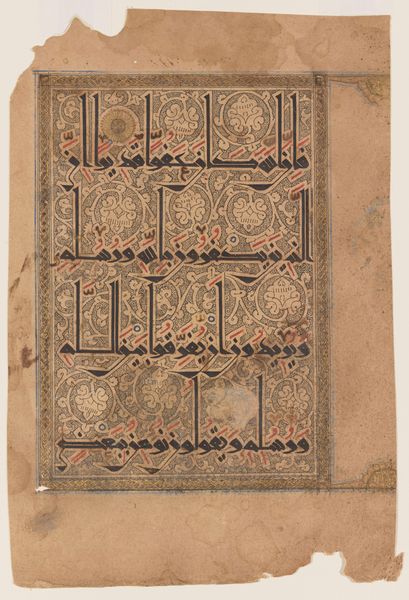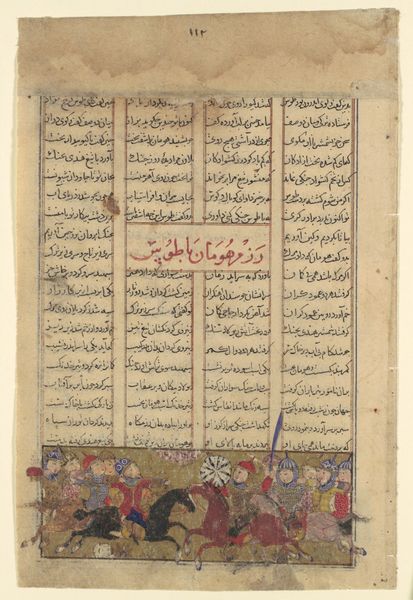
painting, ink
#
narrative-art
#
painting
#
landscape
#
figuration
#
ink
#
islamic-art
#
miniature
#
calligraphy
Dimensions: Painting: H. 17 3/4 in. (45.1 cm) W. 14 1/4 in. (36.2 cm) Overall with margins: H. 28 3/4 in. (73 cm) W. 21 in. (53.3 cm)
Copyright: Public Domain
Curator: What captures me about this piece, right away, is how the artist, Isma'il Jalayir, writing between 1855 and 1865, interweaves word and world. This is an ink and watercolor painting called "Calligraphy Painting," now housed at The Met. It's more than just pretty letters; it's like the story is alive behind them. Editor: Alive is a good word for it! I’m immediately struck by the interplay between the foregrounded calligraphy and the background narrative scene. The calligraphy commands our attention with its graphic boldness, but the painting is working overtime here – trying to resolve depth with detail. Curator: Exactly! It’s not just decoration; the words become the landscape. See how the miniature paintings are integrated right into the negative spaces of the text? We've got hunting scenes, grazing animals, folks picnicking, all framed and almost overshadowed by these bold calligraphic gestures. It is all so dreamlike. Editor: Precisely. What is intriguing is the flatness imposed upon the landscape through the large forms of the calligraphy. Jalayir’s masterful technique uses overlapping and varying line weights in the lettering, and its geometric forms divide the pictorial space. Are we looking at an illustrated manuscript? How should we think of the surface and support? Curator: Maybe that push and pull *is* the point. These Persian miniatures are such precious things, teeming with detail. By layering these narratives behind a dominant script, Jalayir invites a pause, a slower reading. You have to *search* for the narrative. It feels like a meditation. It asks us how the sacredness of language—particularly in Islamic art—permeates all of life. Editor: And there's the architectural element too, isn't there? Note the placement of a city nestled above the script, like some paradise towards which these words reach. One could even suggest that the buildings themselves mirror the script—architectural forms emulating language, adding a kind of rhythmic echo throughout the artwork. The interplay has no resolution; no element comes to the fore as “subject”. Curator: Yes, a paradise of word and image! Editor: The experience, then, leaves us pondering the symbolic value Jalayir attributes to textual meaning, landscape, and spatial depth in equal measure. Curator: I couldn't have put it better myself. It's like the painting invites you to whisper its secrets if you get close enough.
Comments
No comments
Be the first to comment and join the conversation on the ultimate creative platform.
